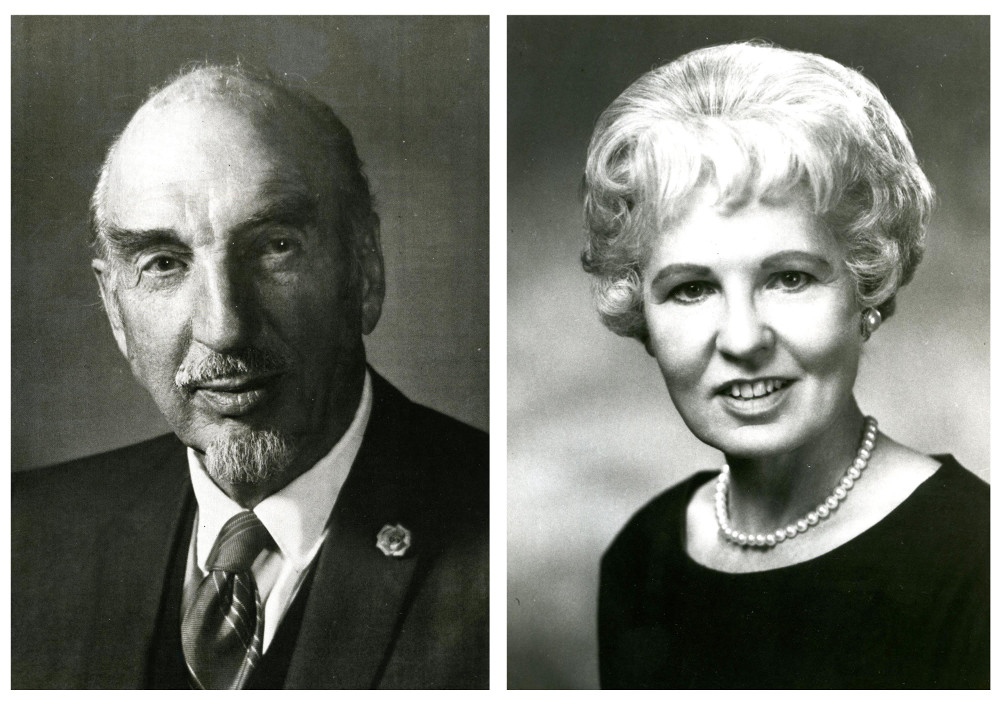Santa Barbara’s Channel City Club
Louis Lancaster's Unique Speaker's Venue

Santa Barbara is home to hundreds of clubs, social groups, and nonprofit organizations. As one observer put it, “You can join groups from Audubon to Zonta.” Among this assortment of groups and gatherings, one of the most unique is the Channel City Club.
The Channel City Club was the brainchild of Louis Lancaster. A native of Colorado, Lancaster grew up in Michigan. After college, he worked in advertising and banking. Lancaster was also very interested in politics, and he served one term in the Florida state legislature. In 1934, he moved to Santa Barbara and went to work for County National Bank and Trust. He later became a founder of Santa Barbara Bank & Trust.
During World War II, Lancaster went to Washington, D.C., where he served as a State Department liaison officer funneling information to organizations such as the Kiwanis, League of Women Voters, and the Rotary. During this time he met Stuart Ward of the Commonwealth Club of San Francisco. This club became the inspiration for the Channel City Club. Lancaster was later part of the team that helped set up the founding conference of the United Nations.
After the war and his return to Santa Barbara, Lancaster called together a number of influential citizens and told them of his idea to form a club, the purpose of which would be to invite distinguished figures to speak on various topics at membership luncheons. Surprisingly, only one member of that original group thought highly of the concept. Lancaster bided his time, again pitched his idea, and this time met with a favorable response. In early 1947, the Channel City Club was born.
Simplicity was a key. Guests spoke for 30 minutes, and 30 minutes was allowed for questions. Lecturers had to be from out of town and were not paid. A member’s initiation fee was $5 and a 25¢ “tax” was charged on the $1.25 luncheons to cover club costs.
Club membership soon numbered over 200. Meetings were held only when a speaker was available. The first was Leon Henderson, a prominent economist; the second was the U.S. Secretary of the Interior. The idea was to promote a relaxed and civil environment to better foster an exchange of ideas.
The roster of speakers has been impressive: Richard Nixon, Hubert Humphrey, Jerry Brown, Billy Graham, Ann Landers, Nelson Rockefeller, writer Aldous Huxley, conductor Leopold Stokowski, Cecil B. DeMille, George Wallace, columnist Walter Lippmann, and Edmund Hillary, conqueror of Mt. Everest — the list goes on and on. Sometimes there were glitches; Humphrey was two hours late and was furious to find the meeting had ended by the time he arrived. DeMille proved to be a bit of a prima donna; his lectern had to be exactly 4 feet 6 inches in height, the light had to be 100 watts, and so on. Yet his talk was highly successful.
The club was for men only, and eventually Louis’s wife, Winifred, took matters into her own hands. After a false start in the 1950s, she founded the Channel City Women’s Forum in 1966. This group often preferred topics on culture and the arts. Authors were popular, although Jimmy Carter, then Georgia governor, spoke and announced he would run for president, which at that time was met with some skepticism.
The two groups merged in 1988 and still welcome to Santa Barbara speakers of national and international renown. In their lifetimes the Lancasters garnered any number of civic awards and honors, but this unique Santa Barbara institution is undoubtedly their outstanding legacy.
Michael Redmon, director of research at the Santa Barbara Historical Museum, will answer your questions about Santa Barbara’s history. Write him c/o The Santa Barbara Independent, 12 East Figueroa Street, Santa Barbara, CA 93101.



